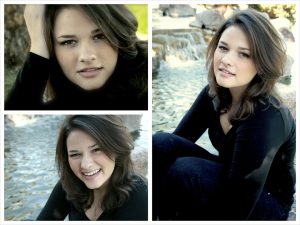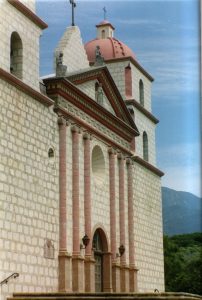A long long time ago…
20 years ago I started taking pictures. Before my family had a digital camera we had a film camcorder. Back then they were huge and heavy things that you set up on your shoulder and look through a giant viewfinder like a Hollywood director. While this was way more fun than modern day videography, it was also much harder. My father used to set up the camcorder and let my sister and I use it to take quick little 3 second videos that we saw as photographs. Middle schooler Natalie and her sister set up their dolls and toy horses in elaborate settings in their bedroom and spent hours composing pictures before taking them with the 3 second video method.
I can’t actually remember ever playing back these video photos or even seeing them later, I think dad probably did a quick rewind and let us record over ourselves! What I do remember is the joy I found in composition.
After the video camera phase I graduated to point and shoot disposable cameras, taking pictures of the kids in the neighborhood. The settings were still elaborate, I spent more time arranging blankets and furniture and stuffed animals than posing my subjects. This time I had tangible evidence of my art, piles and piles of developed film that my mother was generous enough to purchase for me.
Finally in High School I was given my very own reusable point and shoot camera, and I began to document everything from volleyball practice to summer camp with enthusiasm. Now I was paying to develop my own film, and teaching myself the difficult art of documentary photography. After developing 8 rolls of film after one week at summer camp I realized that I needed to be more purposeful with my camera. My composition and subject matter began to improve, and I kept more and more of my developed pictures.
At this point my mom started to let me use her old Canon AE-1 program. It was the first camera that Canon made with Automatic settings. My mother had 2 different lenses and a flash that could be mounted on top of the camera to add light. While I never really mastered the flash, I began to get a knack for in-camera exposure for the first time. I noticed that the different lenses allowed me to accomplish drastically different things, and I started to take some pictures with real longevity, including some senior pictures for my friends.
Ironically, the only few pictures that have survived this period in my career were taken with a point and shoot camera, which had no settings to manipulate at all. They were taken in Santa Barbara at the Mission while we were visiting for a volleyball clinic at UCSB. My parents had large prints made of 2 images from that roll of film and still have them hanging in their house. I have the negatives and scans of a few prints.
After I graduated High School I used all of my graduation money to buy my first digital camera. It was a Canon 30D DSLR, and it was the best purchase I’ve ever made. Though I had no intention of making photography my career, I had discovered during a bad computer purchase that I couldn’t handle working with second rate equipment, so I bought a nice camera. My parents were sending me to a biblical studies class in Hawaii with an elective in photography, so I knew that I would have a chance to properly learn this new technology.
Luckily I did. But not through the classes I took in Hawaii. I spent tons of time reading about my camera, experimenting with every setting I understood, and making lots of mistakes with the ones I didn’t. When I got home from my 6 month trip (which I will write about later), I went back to my job in retail and took pictures of people for spending money. There was no post processing, no photoshop, just what I could make happen with my canon and the lenses that came with the camera.
Some part of me wished that I’d gone back to college right away after my time in Hawaii/India. They would have told me right there that I needed post processing to take my images to get to the next level, but I think I’m glad that I didn’t. Instead, I spent the next 6 years working as hard as I could to get the best images possible in-camera with a Canon that was increasingly becoming obsolete in the market. During that time, my composition and understanding of the inner workings of my camera increased dramatically. And the pictures weren’t by any means sub-par. There are many pictures in my portfolio today that I took years before I owned photoshop or top of the line equipment.
My wakeup call came when I got engaged and had to hire a photographer to shoot my Engagement pictures. She didn’t show up with the top camera on the market (I’d done my research, I knew what to look for!), but she had a killer lens and worked hard to get us posed in a flattering and natural way. I didn’t appreciate the way she handled herself during the shoot, and she introduced a woman who was clearly her mother as her second shooter. My fiancé of the time complained about what the shoot had cost, but I knew that this was not something I could accomplish by myself, and I had no problem paying someone with more knowledge and experience than myself.
The pictures came back and I could not have been more delighted. They had been polished to perfection and I loved every one. But some part of me still wondered if I could have done a better job. I flashed back to all the unused poses, the things she tried that clearly didn’t work, and the way that both photographers had just felt fake and overzealous at the time of the shoot.
A few months later I rented the lens that this photographer had used, and I knew after 2 hours with it that I was absolutely going to buy one. I also realized that I wanted to jump into the Wedding market. My portraits at this point were good, though not top of the line, and now I had a lens that could help me get to the next level. I’d now been involved in enough weddings that I had solid ideas about how to be a great Wedding Photographer, and how to do a better job than most photographers I’d come into contact with.

The picture that sealed my fate. After this popped up on my computer screen after a shoot, I knew that this was what I was meant to do.
In 2013 I learned how to use photoshop, and everything suddenly changed. Now I could give my pictures the perfectly polished look that was required to be a professional photographer. I hadn’t realized that this was the last little piece of the puzzle required to produce those stunning portraits I saw all over the internet. The incredible man who is now my husband was my web developer back then, and I remember sending him this picture of a little girl I took at a family portrait session. He said what I was thinking: “You need to quit your job and start taking pictures full time.”
Over the next few years I watched countless videos, read tons of books, participated in dozens of online seminars, talked to other photographers, and wore out 3 DSLR cameras in pursuit of my craft. I’ve shot for hundreds of families, completed dozens of Weddings that I am incredibly proud of, and met some truly incredible people… but I’m not done learning. I love my work, and I love being able to create images for my clients, but I also know that photography is constantly evolving, the equipment gets better and better, and there will always be new things to try. I love that I am in a field that will require my constant attention in order to stay in the game.
If you are trying to start out in photography and are interested in following my journey, or in taking my class, I urge you to think about why you like taking pictures. If you are a selfie-fiend or a person who takes 400 pictures in one day with your cell phone that never even make it to social media, you’re probably just going through a phase. But if you spend time thinking about how to take a good pictures, if you wish you could preserve special memories with your loved ones, and if you want to take pictures worthy of printing, then I hope you stick with it. Get out your camera and really look at the dial and all the buttons. It’s time to learn how to use that awesome piece of equipment!
I’ll be publishing some easy ways to get familiar with photography, with your camera, and to take better pictures. Please feel free to ask questions, and don’t be afraid to experiment. After all, you are shooting digital! Unlike most photographers who came before you, you don’t have to spend tons of money on film and developing while you learn. You can try anything, shoot anything, and immediately delete it (or not!).
Happy shooting <3
-Natalie









